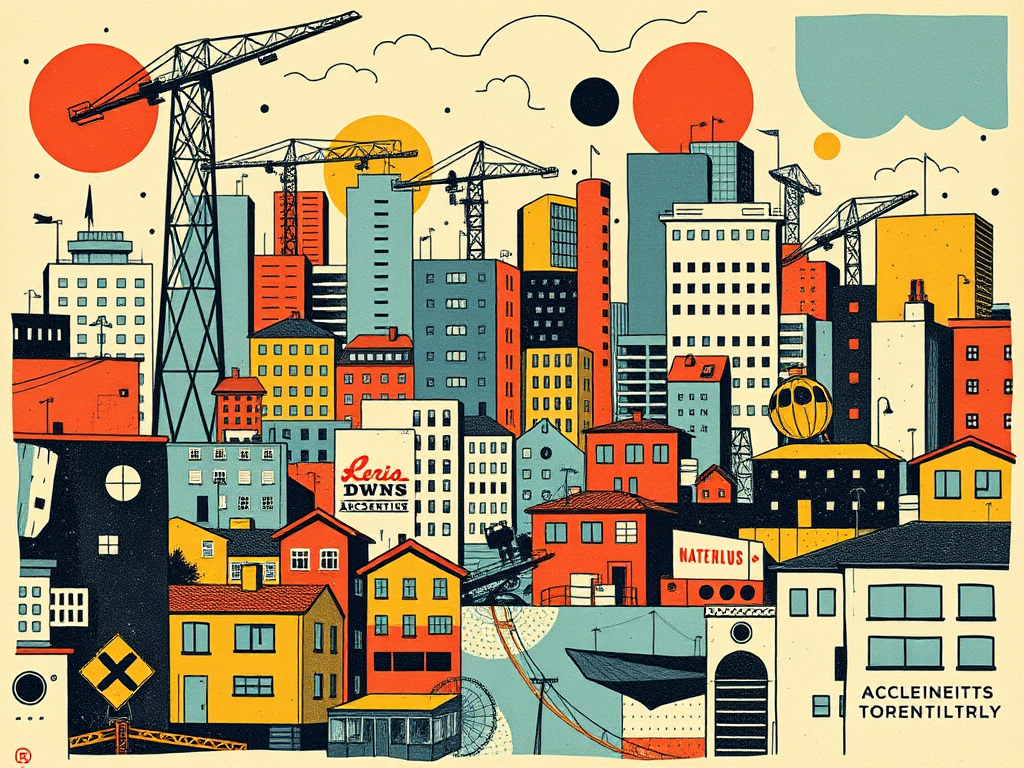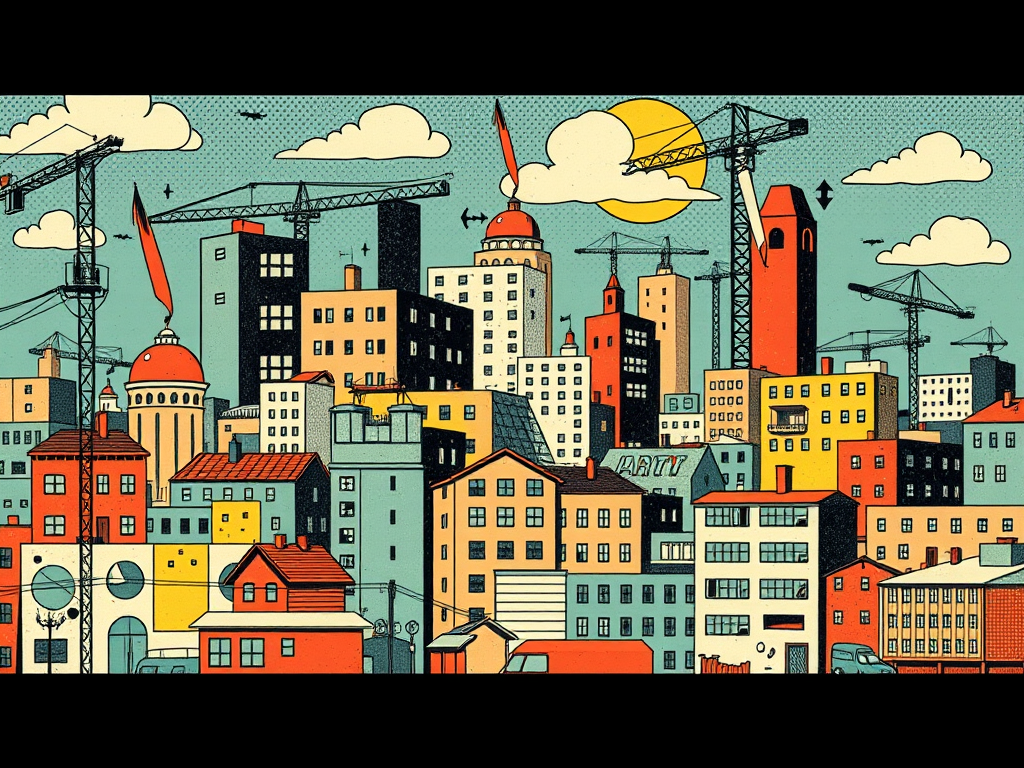
Public Infrastructure Plans: How New Metro Lines or Highways Raise Nearby Property Values
Reading time: 15 minutes
Table of Contents
- Introduction
- The Impact of Public Infrastructure on Property Values
- Metro Lines and Property Value Appreciation
- Highway Development and Real Estate Dynamics
- Case Studies: Success Stories from Around the World
- Economic Analysis of Infrastructure-Driven Property Value Increases
- Challenges and Considerations
- Future Outlook: Emerging Trends in Infrastructure and Real Estate
- Conclusion
- FAQs
Introduction
In the ever-evolving landscape of urban development and real estate, public infrastructure projects play a pivotal role in shaping the economic trajectory of neighborhoods and entire cities. This comprehensive analysis delves into the intricate relationship between major infrastructure initiatives, such as new metro lines and highways, and their profound impact on nearby property values. As we navigate through this complex topic, we’ll explore the economic mechanisms at play, examine case studies from across the globe, and provide data-driven insights into the future of infrastructure-driven property value appreciation.
The Impact of Public Infrastructure on Property Values
Public infrastructure investments serve as catalysts for economic growth and urban development. The construction of new metro lines, highways, and other transportation networks not only enhances mobility but also significantly influences the real estate market dynamics in surrounding areas. This section examines the fundamental principles underlying the correlation between infrastructure development and property value appreciation.
Key Factors Driving Property Value Increases
Several interrelated factors contribute to the upward trajectory of property values in areas benefiting from new infrastructure projects:
- Improved Accessibility: Enhanced transportation options reduce commute times and increase connectivity to key urban centers.
- Economic Development: Infrastructure projects often attract businesses and commercial activities, creating job opportunities and stimulating local economies.
- Quality of Life Enhancements: Improved public spaces, reduced traffic congestion, and better urban planning contribute to a more desirable living environment.
- Speculative Investment: Anticipation of future growth and development attracts investors, further driving up property demand and prices.
Metro Lines and Property Value Appreciation
The development of new metro lines represents a significant urban infrastructure investment with far-reaching implications for local real estate markets. This section explores the specific ways in which metro systems influence property values and shape urban landscapes.
Quantifying the “Metro Premium”
Numerous studies have attempted to quantify the impact of metro accessibility on property values. While results vary depending on location and other factors, research consistently demonstrates a positive correlation between proximity to metro stations and increased property values. Some key findings include:
- Properties within a 500-meter radius of metro stations often command a premium of 10-25% compared to similar properties further away.
- The impact is most pronounced for residential properties, but commercial real estate also benefits significantly.
- The “metro premium” tends to be higher in dense urban areas and cities with well-developed public transportation networks.
It’s important to note that the magnitude of value appreciation can vary based on factors such as the overall quality of the metro system, integration with other transportation modes, and the broader economic context of the city.
Highway Development and Real Estate Dynamics
While metro systems are often associated with urban cores, highway development plays a crucial role in shaping suburban and peri-urban real estate markets. This section examines the complex relationship between highway infrastructure and property values, considering both positive and potentially negative impacts.
The Dual Nature of Highway Impacts
Highway development can have a nuanced effect on nearby property values, with both positive and negative factors at play:
Positive Impacts:
- Increased Accessibility: Improved connections to urban centers and job markets can significantly boost property values in previously isolated areas.
- Commercial Development: Highway interchanges often attract retail and commercial developments, creating new economic hubs.
- Suburban Growth: New highways can facilitate suburban expansion, opening up previously undeveloped land for residential projects.
Potential Negative Factors:
- Noise and Air Pollution: Properties immediately adjacent to highways may experience decreased values due to environmental concerns.
- Visual Impact: The aesthetic impact of large highway structures can detract from the appeal of nearby residential areas.
- Community Disruption: Highway construction may sometimes divide existing communities, potentially impacting social cohesion and local property markets.
The net effect on property values often depends on the specific location, design of the highway project, and mitigation measures implemented to address potential negative impacts.
Case Studies: Success Stories from Around the World
Examining real-world examples provides valuable insights into the transformative power of infrastructure projects on local real estate markets. This section highlights notable case studies from diverse global contexts, demonstrating the universal applicability of infrastructure-driven property value appreciation.
London’s Crossrail Project
The Crossrail project, also known as the Elizabeth Line, represents one of the most ambitious infrastructure undertakings in recent European history. This massive east-west railway line across London has had a profound impact on property values along its route:
- Residential property values near Crossrail stations have increased by an average of 25% since the project’s announcement in 2009.
- Some areas, such as Woolwich in southeast London, have seen property price increases of over 50% attributed to the Crossrail effect.
- Commercial real estate has also benefited, with office rents near Crossrail stations outperforming the broader London market.
Hong Kong’s MTR Property Model
Hong Kong’s Mass Transit Railway (MTR) Corporation has pioneered an innovative approach to infrastructure development, integrating real estate development with transit projects:
- The MTR develops properties above and around its stations, capturing the value created by improved accessibility.
- This model has led to consistently higher property values near MTR stations compared to other areas of Hong Kong.
- The success of this approach has influenced transit-oriented development strategies worldwide.
Economic Analysis of Infrastructure-Driven Property Value Increases
To fully understand the economic implications of infrastructure-driven property value appreciation, it’s essential to conduct a rigorous analysis of the underlying mechanisms and broader market dynamics. This section delves into the economic theories and empirical evidence that explain the relationship between public infrastructure investments and real estate value creation.
The Multiplier Effect
Infrastructure investments generate a multiplier effect throughout the local economy, which in turn supports property value appreciation:
- Direct Impact: Initial construction spending creates jobs and stimulates local businesses.
- Indirect Impact: Improved accessibility and economic activity attract new businesses and residents, further driving demand for real estate.
- Induced Impact: Higher property values lead to increased property tax revenues, potentially funding additional public improvements.
Long-Term Value Creation
The impact of major infrastructure projects on property values often extends far beyond the initial construction phase:
- Studies show that property value appreciation near new transit lines can continue for 10-20 years after project completion.
- The long-term effect is particularly pronounced in areas undergoing broader urban regeneration or experiencing significant population growth.
- Sustainable infrastructure designs that prioritize environmental and social factors can contribute to more resilient long-term value appreciation.
Challenges and Considerations
While the potential for infrastructure-driven property value increases is significant, it’s crucial to acknowledge and address the challenges and potential downsides associated with these developments. This section explores key considerations for policymakers, urban planners, and real estate investors.
Gentrification and Affordability Concerns
Rapid property value appreciation can lead to gentrification, potentially displacing long-time residents and altering the character of established neighborhoods. Strategies to mitigate these effects include:
- Implementing inclusionary zoning policies to ensure a mix of affordable housing options.
- Developing community land trusts to preserve long-term affordability.
- Engaging in participatory planning processes to incorporate community needs and preferences.
Equitable Distribution of Benefits
Ensuring that the benefits of infrastructure-driven property value increases are distributed equitably across diverse communities remains a significant challenge. Policymakers must consider:
- Implementing value capture mechanisms to reinvest a portion of property value gains into community improvements.
- Developing targeted programs to support small businesses and local entrepreneurship in areas experiencing rapid development.
- Balancing the needs of different stakeholders, including existing residents, new investors, and the broader urban community.
Future Outlook: Emerging Trends in Infrastructure and Real Estate
As we look to the future, several emerging trends are likely to shape the relationship between public infrastructure and property values. This section explores key developments that investors, policymakers, and urban planners should monitor closely.
Smart Infrastructure and the Internet of Things (IoT)
The integration of smart technologies and IoT solutions into infrastructure projects is poised to revolutionize urban living and potentially impact property values:
- Smart traffic management systems could further enhance the accessibility benefits of new transportation infrastructure.
- IoT-enabled buildings and neighborhoods may command premium values due to improved efficiency and quality of life.
- Data-driven urban planning could lead to more targeted and effective infrastructure investments, maximizing property value impacts.
Sustainable and Resilient Infrastructure
As climate change concerns grow, infrastructure projects that prioritize sustainability and resilience are likely to have an increasingly significant impact on property values:
- Green infrastructure initiatives, such as urban parks and stormwater management systems, may become key drivers of property value appreciation.
- Climate-resilient transportation networks could become essential factors in long-term real estate investment decisions.
- Properties near sustainable infrastructure may benefit from lower insurance costs and increased market appeal.
Conclusion
The relationship between public infrastructure investments and property values is complex, multifaceted, and increasingly critical to understanding urban development dynamics. As cities continue to grow and evolve, the strategic planning and implementation of infrastructure projects will play a pivotal role in shaping real estate markets and urban economies.
The evidence clearly demonstrates that well-designed and executed infrastructure initiatives, particularly in transportation, can significantly boost property values in surrounding areas. However, it’s crucial to approach these developments with a holistic perspective, considering not only the potential for economic growth but also the social and environmental implications.
For investors, the key takeaway is the importance of staying informed about upcoming infrastructure projects and understanding their potential impacts on local real estate markets. For policymakers and urban planners, the challenge lies in harnessing the value-creating potential of infrastructure investments while ensuring equitable and sustainable outcomes for all community members.
As we look to the future, the integration of smart technologies, sustainability considerations, and innovative financing models will likely reshape the landscape of infrastructure-driven property value appreciation. By staying attuned to these trends and maintaining a data-driven, multi-dimensional approach to analysis, stakeholders can better navigate the complex interplay between public infrastructure and real estate dynamics.
For those interested in exploring international real estate opportunities influenced by infrastructure developments, consider investigating property for sale in peloponnese, where ongoing infrastructure improvements are creating exciting investment prospects.
FAQs
-
Q: How long does it typically take for property values to increase after the announcement of a new infrastructure project?
A: The timeline for property value increases can vary depending on the scale and nature of the project. Generally, some appreciation occurs immediately upon announcement due to speculative investment. However, significant and sustained increases often materialize over a 5-10 year period as the project progresses and its benefits become tangible.
-
Q: Are there any infrastructure projects that consistently lead to higher property value increases than others?
A: While results can vary by location, metro and light rail projects tend to have the most consistent and significant positive impact on nearby property values. This is due to their ability to dramatically improve accessibility and catalyze transit-oriented development.
-
Q: How can homeowners near planned infrastructure projects protect themselves from potential negative impacts?
A: Homeowners should stay informed about project details, participate in community planning processes, and consider joining or forming neighborhood associations to advocate for their interests. Additionally, investing in home improvements that mitigate potential negative impacts (e.g., soundproofing for properties near new highways) can help protect property values.
-
Q: What role do public-private partnerships play in infrastructure-driven property value increases?
A: Public-private partnerships (PPPs) are increasingly common in major infrastructure projects. These collaborations can accelerate project timelines and bring additional expertise and resources, potentially leading to more rapid and significant property value appreciation. However, it’s important to ensure that PPPs are structured to balance public benefits with private sector returns.
-
Q: How might future technological advancements, such as autonomous vehicles, impact the relationship between infrastructure and property values?
A: Emerging technologies like autonomous vehicles could reshape urban mobility patterns and, consequently, the impact of traditional infrastructure on property values. For instance, the importance of proximity to public transit might decrease, while the value of properties with easy access to autonomous vehicle pickup/dropoff points could increase. Adaptive infrastructure that can accommodate evolving technologies may become increasingly valuable in the future real estate market.

Article reviewed by Liina Tamm, Real Estate and Investment Expert | Consultant for Commercial and Residential Properties | Market Analysis and Strategies for International Investors, on March 21, 2025
